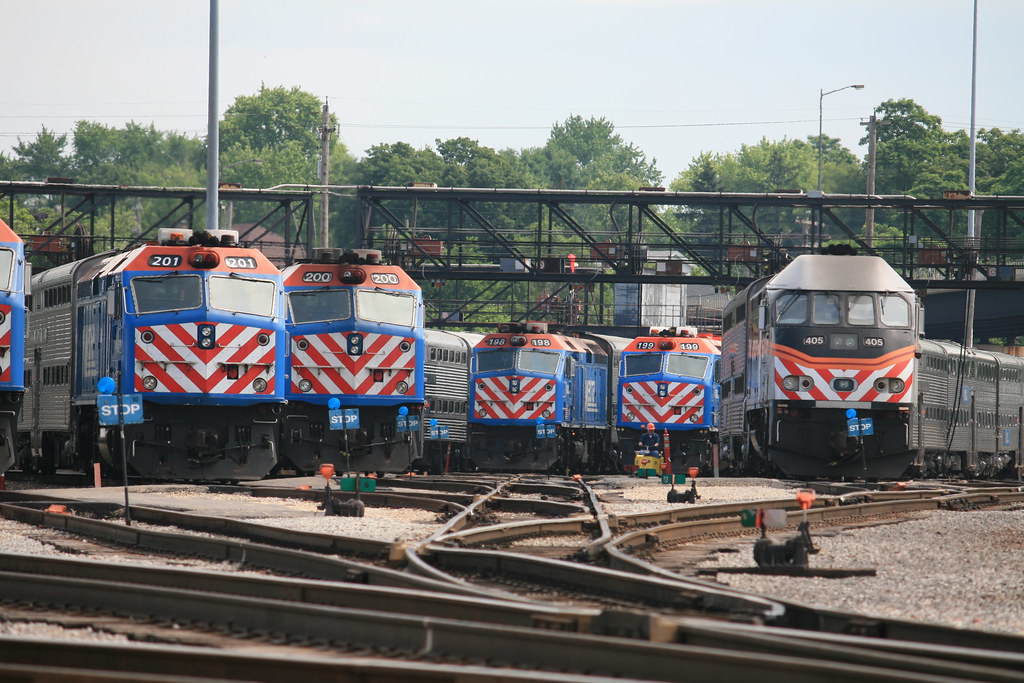TheOneKEA wrote: ↑Sat Feb 17, 2024 7:21 pm
robelybasis wrote: ↑Sat Feb 17, 2024 6:45 pm
Hopefully Amtrak takes some steps to partially electrify corridors to help maximize efficiency and air quality around new airo routes. This takes the logistical nightmare of engine changes away. Maybe partial springfield corridor electrification or North station in Boston. Or the Washington D.C. tunnels?
What are some corridors that could be electrified or partially electrified easily with these trains now in service?
Electrification of the 1st Street Tunnels would be fantastically expensive. Both tunnels would need to have their inverts completely removed and the underlying soil (which is probably chock full of all sorts of interesting structures that would need to be diverted) dug out to a depth sufficient to provide the vertical clearances for the 12kV catenary. Then the tunnel sides and crown would need to be completely rehabiliated, reinforced and likely replaced in many areas in order to prevent collapse and/or degradation from the disturbances related to the soil excavation. All of this would have to be coordinated carefully with the rest of the federal government to avoid any disturbances to the National Mall and the buildings around it, and that would result in a very, very high cost.
KEA (and RB): YES - Substantial alterations to the 1st Street Tunnels in Washington WILL be VERY expensive...
I am going to further correct KEA with some DC geography that is *Off Topic* but deserves mention:
First and foremost - For those unaware 1st Street NE/SE runs N/S from Union Station passing these important
US Government buildings: The Russell and Dirksen Senate Office Buildings; United States Supreme Court and
Library of Congress on the E side and US Capitol grounds on the W side of 1st Street; The James Madison/Lib.
Of Congress and Cannon House Office Buildings; The Metro Capitol South Station (Blue/Orange/Silver Lines)
ALL of these mentioned US Government buildings can be considered **Ultra-High Security** facilities...
The First Street Tunnel exit is near D Street and New Jersey Avenue SE with the tracks curving SW towards the
former Virginia (Avenue) Tower location westward towards the L'Enfant Plaza (and VRE station) area...
The US Capitol Building is considered the center of the District of Columbia - North, East and South Capitol
Streets discern NW, NE, SW and SE along with the National Mall - extending westward from the US Capitol
to the Washington Monument and Lincoln Memorial and in the process divides NW from SW...
The First Street Tunnel S of Union Station has nothing whatsoever to do with the National Mall...
Something that I would like to see is a track chart of Washington Union Station's south lower-level "throat"
to see where the "AC MOTOR STOP" signs are located indicating the end of catenary wire leading towards
the First Street Tunnel...This must be of sufficient length to allow AC motors to run around consists during
engine changes - the 1st Street Tunnel clearance currently allows some excess height rail equipment
(such as Amtrak Superliners and VRE Gallery Cars) to use the Tunnel (in case anyone is unaware)...
Extending catenary wire through the 1st Street Tunnel actually made sense decades ago when the route
through DC over the Long Bridge to Potomac Yard was still electrified - for the record Conrail removed the
wires in the early 1980s along with the gradual drawdown and eventual closure of Potomac Yard...
If the line was still electrified closing the "gap" through the First Street Tunnel along with extending
the electrified main tracks to Alexandria Station would have made sense...Today not so much if at all...
I first traveled to Washington, DC in 1978-1979 and remember being surprised to find out about the
short First Street Tunnel "gap" between the former PRR/PC electrified routes and even then after
seeing Amtrak trains enter and exit the First Street Tunnel south portal that clearance was "tight"...
WP: A more prudent way of providing power to locomotives allowing them to be shut down is to
provide stand-by (plug-in) power apparatus in yard facilities - which would be more sensible than
stringing a short segment of wire in a yard with a much-higher voltage...An outside electric supply
should be at what the new units will function with internally after stepdown from a transformer
(AC or DC depending on the voltage level to be determined)...MACTRAXX
EXPRESS TRAIN TO NEW YORK PENN STATION-NO JAMAICA ON THIS TRAIN-PLEASE STAND CLEAR OF THE CLOSING TRAIN DOORS
